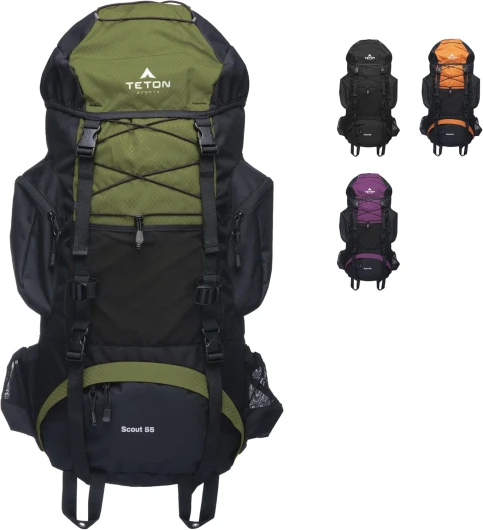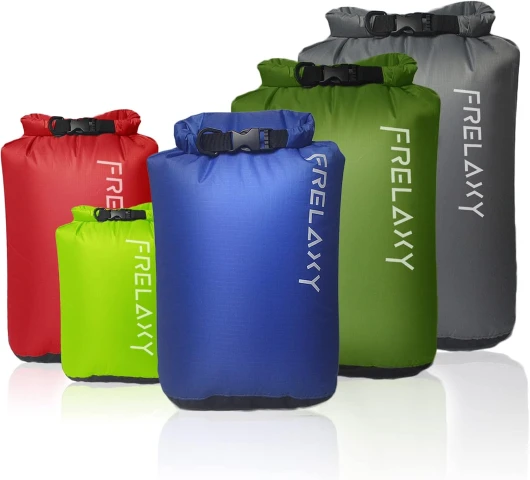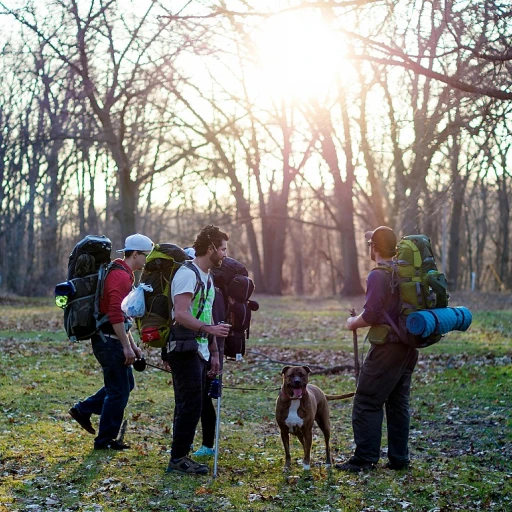
Understanding the Importance of Proper Fit
The Crucial Role of a Perfect Fit in Backpacking
Selecting a backpack that fits properly is imperative not only for comfort but also for ensuring a seamless and enjoyable backpacking trip. The way your backpack fits can significantly influence your overall experience, affecting how the load is distributed across your back, shoulders, and hips, ultimately impacting your ability to carry the pack comfortably for multiple days.
One of the pivotal components to consider is the torso length. Backpacks are designed with various torso lengths in mind, ensuring a good fit across different body types. The hip belt plays a crucial role in transferring weight from your shoulders to your hips, allowing you to move with ease. When the hip belt is positioned correctly, it supports most of the pack weight, providing relief to your shoulders.
Shoulder straps and a sternum strap also contribute to stabilizing the pack, ensuring that it doesn’t sway back and forth during your trek. Thus, it’s essential to adjust these straps accordingly. Additionally, load lifters can be adjusted to fine-tune the fit, pulling the pack closer to your body and maintaining balance even with variable loads.
Understanding the importance of these elements guarantees that your backpack is not just a burden to bear but a supportive companion throughout your journey. For those seeking thoughtful presents for fellow backpackers, consider exploring thoughtful gifts for avid backpackers that elevate their experience. Ensuring a well-fitted backpack will enhance both short and long excursions, proving that the right gear is just as important as the adventure itself.
Factors Influencing Backpack Size
Determining Your Personal Carrying Needs
The quest to find a backpack that works for you begins with considering the specific nature of your backpacking trip. Backpack size is crucial and is contingent upon several factors:
- Trip Duration: A pack for a day hike will differ vastly from those needed for a multi-day trek. Overnight adventures demand space for a sleeping bag, sleeping pad, and other gear.
- Pack Weight and Load: The amount you plan to carry directly influences the size. Heavier loads require packs with a good internal frame to provide support while lighter loads might suffice with minimal framing.
- Backpack Volume: Considering the cubic inches or liters of pack volume ensures you have enough capacity without overburdening.
- Body Fit: The pack should fit your torso length and adapt to your hip shape with a well-designed hip belt. Women specific models cater to diverse shapes, enhancing comfort.
Understanding these elements can help determine the right size for your needs, increasing overall comfort and efficiency on the trail. For more insights into essential gear, explore our guide on backpacking essentials.
Adjusting your pack with well-fitted shoulder straps, load lifters, and a sternum strap can further refine its fit, ensuring you carry the weight evenly and comfortably.
Common Mistakes in Choosing Backpack Size
Avoiding the Pitfalls: Common Pack Size Mistakes
When it comes to selecting the right backpack size, many hikers often fall into the same traps that can lead to discomfort and inefficiency on the trail. Here, we explore some frequent missteps to help you make informed decisions for your next backpacking trip. First, a common mistake is overestimating the volume you actually need. While it's tempting to opt for a larger size pack to fit everything you could possibly need, it often results in carrying unnecessary gear. A pack with excessive capacity, such as those measuring over 70 liters or 4,270 cubic inches, adds undue weight and can encourage you to overpack, impacting your load distribution and causing strain on your torso and shoulders. Furthermore, ignoring the importance of torso length adjustment can lead to an uncomfortable fit. Backpacking packs often provide adjustable shoulder straps and a hip belt to accommodate varying body types. However, if the backpack’s torso length doesn't match your own, even the best packs won’t be properly balanced, resulting in an uneven weight distribution that can strain your back and hips. Another overlooked factor is the neglect of women's specific packs. These are designed with narrower shoulder straps and shorter torso lengths for a better fit and comfort. Choosing a non-specific pack can lead to discomfort over multi-day hikes. Lastly, the position and tension of the pack's hip belt often goes unchecked. This component is crucial as it helps to distribute the pack weight across your hips, allowing your legs to carry much of the load. Ensuring the hip belt fits snugly, right over your hip bones, can greatly enhance comfort and stability during your trek. To learn more about ascending with better equipment and avoiding these pitfalls, visit The art of hiking upward.Adjusting Your Pack for Optimal Comfort
Optimizing Your Pack for Comfortable Days on the Trail
Achieving comfort and efficiency with your backpacking pack begins with a proper fitting process. Once you've selected the appropriate pack size by considering factors like torso length and pack volume, it's time to fine-tune your gear for those multi day adventures. First off, the weight distribution is key. The main compartments of your pack will house heavier items like your sleeping bag or cooking gear. These should be placed closest to your back to enhance balance and reduce strain. Utilizing the right pack size will ensure your gear fits neatly without creating uncomfortable bulges. Shoulder Straps and Hip Belt:- Properly adjusted shoulder straps are vital for a snug fit. Aim for a stroke width that hugs your shoulders without cutting into your skin.
- Your hip belt, often overlooked, should carry about 80% of your pack's weight. It needs to sit comfortably on your hips, not your waist.
- Load lifters on your pack are designed to pull the weight forward, preventing it from dragging you back. Make sure these are slightly angled toward your body.
- A sternum strap adds stability and helps avoid excessive bouncing, making your day smoother.
Innovations in Backpack Design
Revolutionary Design Features for Enhanced Backpacking Experience
Modern-day backpacking packs have come a long way, making them more comfortable and efficient for all adventurers. Innovations in technology have led to advancements that not only optimize the fit but also improve the overall hiking experience for both novice and experienced hikers.- Internal Frame Systems: Most contemporary packs feature internal frames designed to help distribute the weight of the load evenly across your torso. This design reduces stress on the shoulders and aligns the load more comfortably with your center of gravity.
- Adjustable Torso Length and Hip Belts: Adjustability is a key factor in ensuring a good fit. Many packs come with customizable torso lengths and hip belts, allowing users to modify the pack to their specific body type. This adjustability is crucial in reducing strain during multi-day backpacking trips.
- Advanced Load Lifters and Sternum Straps: Load lifters and sternum straps play a pivotal role in adjusting the stability of the backpack, ensuring that the weight is efficiently carried close to your body. These features prevent shifting and promote better balance and control over the pack.
- Women-Specific Designs: Understanding anatomical differences, some manufacturers now offer women-specific backpacks. These designs have straps and hip belts tailored to fit the female form better, enhancing comfort and performance on the trail.
- Integrated Sleeping Bag Compartments and Attachment Points: Many backpacking packs now incorporate specialized compartments for sleeping bags and additional attachment points for gear such as sleeping pads. These compartments help manage pack volume efficiently, ensuring your most essential items are easily accessible.
Expert Tips for Experienced Hikers
Seasoned Insights for a Comfortable Trek
When heading out on a backpacking trip, ensuring that your gear provides a comfortable fit can make a world of difference, especially for experienced hikers tackling multi-day adventures. Several strategies can help achieve the perfect harmony between your pack and your journey.
Understanding Pack Weight and Distribution
First and foremost, pack weight should be a primary consideration. Begin with determining the base weight of your pack, excluding consumables like water and food. A well-balanced pack will minimize strain, improving your endurance and comfort. Consider dividing your load strategically, placing heavier items, such as your sleeping bag and gear, closer to your back and at the middle of your pack. This ensures better weight distribution over your torso.
Personalizing the Fit
- Adjust your torso length precisely to get a snug fit, as every backpack’s adjustability might differ slightly.
- Secure your shoulder straps and hip belt—these should be tight enough to hold the pack securely, yet not so tight that they become uncomfortable.
- Utilize load lifters and a sternum strap to ease the burden off your shoulders and distribute the weight evenly.
Optimizing Pack Size
Choosing the right size pack is crucial; each backpack size corresponds to specific volume measurements, often denoted in cubic inches. A good fit will accommodate your gear without causing excessive strain. Whether it's the internal frame or external objects like a sleeping pad, ensuring their proper alignment with your bag’s volume is vital for an efficient carry.
Specialty Packs
Women-specific packs offer tailored designs accommodating shorter torso lengths and body shapes, often with modified hip belts and shoulder straps. These packs can enhance comfort remarkably if they align with your needs, contributing to a more enjoyable hiking day.
By paying attention to these elements, experienced hikers can ensure their backpacking packs not only fit well but also support them through miles of scenic trails in utter comfort.


















